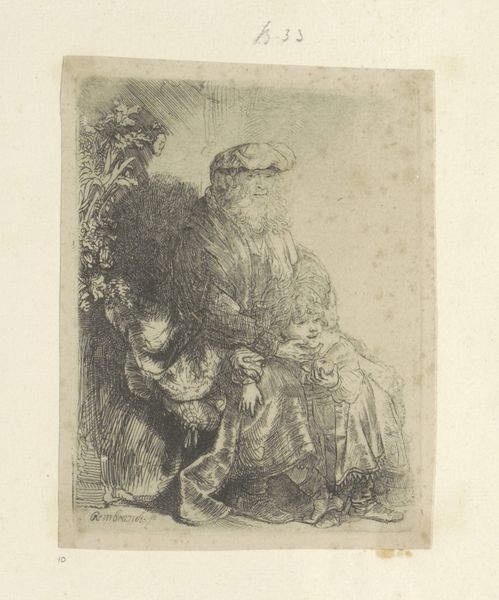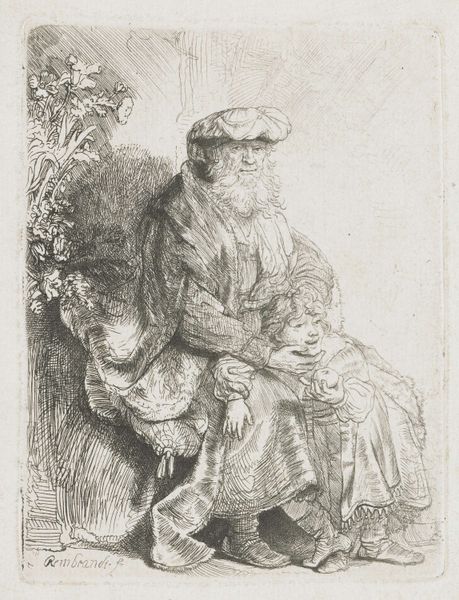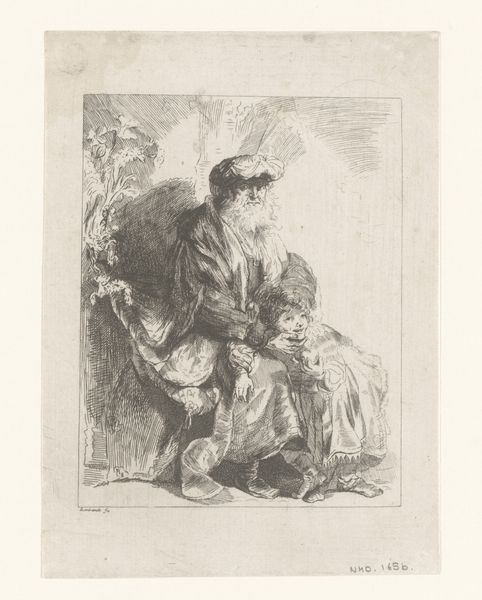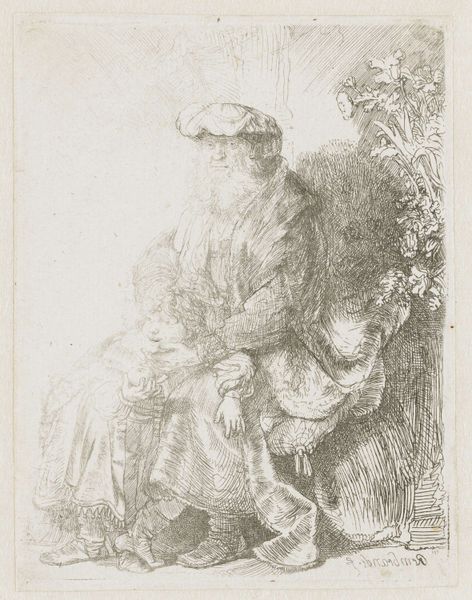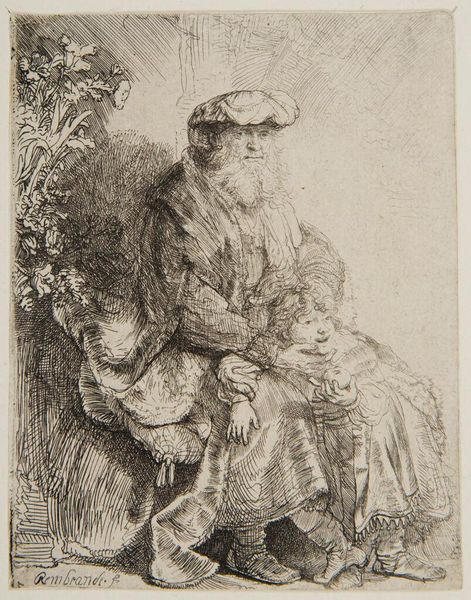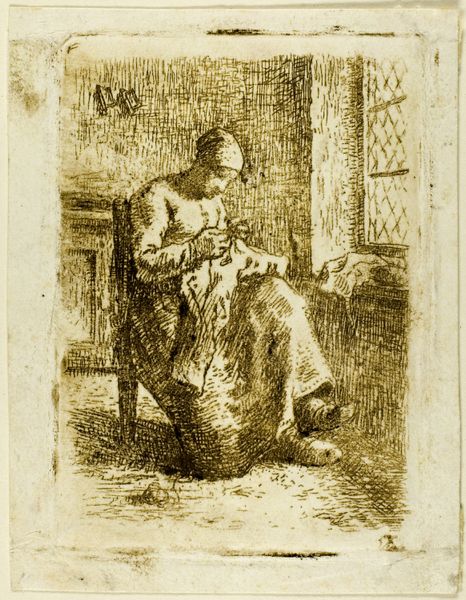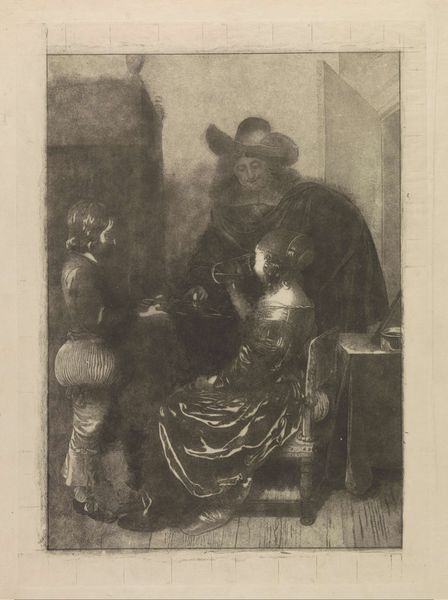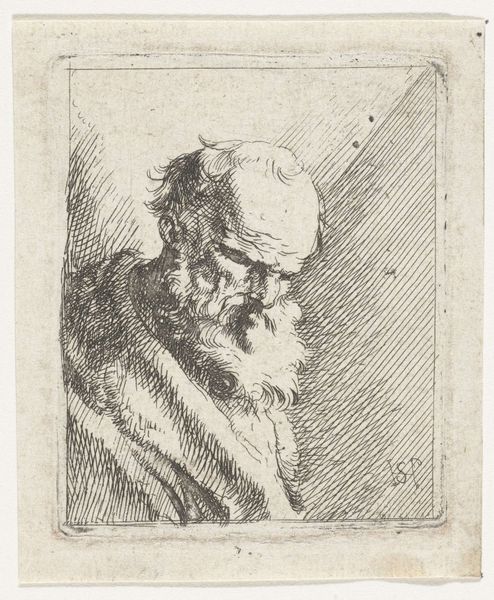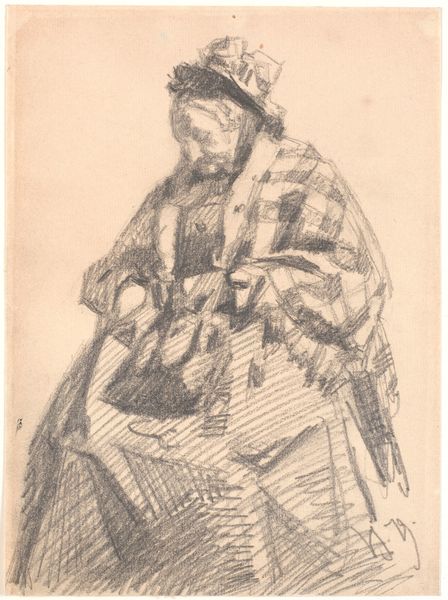![['Abraham caressing Isaac', 'Jacob caressing Benjamin'] by Rembrandt van Rijn](/_next/image?url=https%3A%2F%2Fd2w8kbdekdi1gv.cloudfront.net%2FeyJidWNrZXQiOiAiYXJ0ZXJhLWltYWdlcy1idWNrZXQiLCAia2V5IjogImFydHdvcmtzLzJkMjkwNDY1LTU3NzAtNDc2OS1hNThjLWYwMTI1NjRjOGNiMy8yZDI5MDQ2NS01NzcwLTQ3NjktYTU4Yy1mMDEyNTY0YzhjYjNfZnVsbC5qcGciLCAiZWRpdHMiOiB7InJlc2l6ZSI6IHsid2lkdGgiOiAxOTIwLCAiaGVpZ2h0IjogMTkyMCwgImZpdCI6ICJpbnNpZGUifX19&w=3840&q=75)
['Abraham caressing Isaac', 'Jacob caressing Benjamin'] c. 1637 - 1906
0:00
0:00
rembrandtvanrijn
Rijksmuseum
Dimensions: height 116 mm, width 88 mm
Copyright: Rijks Museum: Open Domain
Editor: Here we have Rembrandt van Rijn's etching, titled "Abraham caressing Isaac", though some believe it could also depict Jacob caressing Benjamin. It was created sometime between 1637 and 1649. The delicate linework and the tender embrace create such an intimate feeling. What symbols do you see embedded in this image? Curator: Notice how Rembrandt uses light and shadow. That deep shadow that cloaks a large portion of the image throws the figures of the man and the child into sharp relief. What do you suppose this symbolic darkness conceals, not just in the literal composition, but also perhaps psychologically? Editor: Well, the figures are the focus, it makes their embrace much more powerful. They really do seem to exist on a different plane of reality to the rest of the world! Curator: Indeed. It recalls the powerful imagery in religious paintings, where darkness and light signify knowledge and divine grace. In some interpretations, this simple, shared affection could also represent hope and promise extending to the viewer, made especially poignant given the artist's own personal tragedies and the tumultuous times he lived through. How might you feel hope can be projected via visual imagery, even beyond cultural and language divides? Editor: Hmm, that's an interesting point... Maybe hope manifests through repeated, enduring depictions of universal, relatable scenes like this? Showing affection, the bond of parent and child…these tap into something inherently human and enduring. Curator: Precisely. The visual language becomes a form of collective memory, accessible across generations. Editor: That makes perfect sense. I never thought about it that way. Thanks for illuminating that for me! Curator: My pleasure. Remember, images often whisper stories of the past while speaking volumes to our present.
Comments
No comments
Be the first to comment and join the conversation on the ultimate creative platform.
